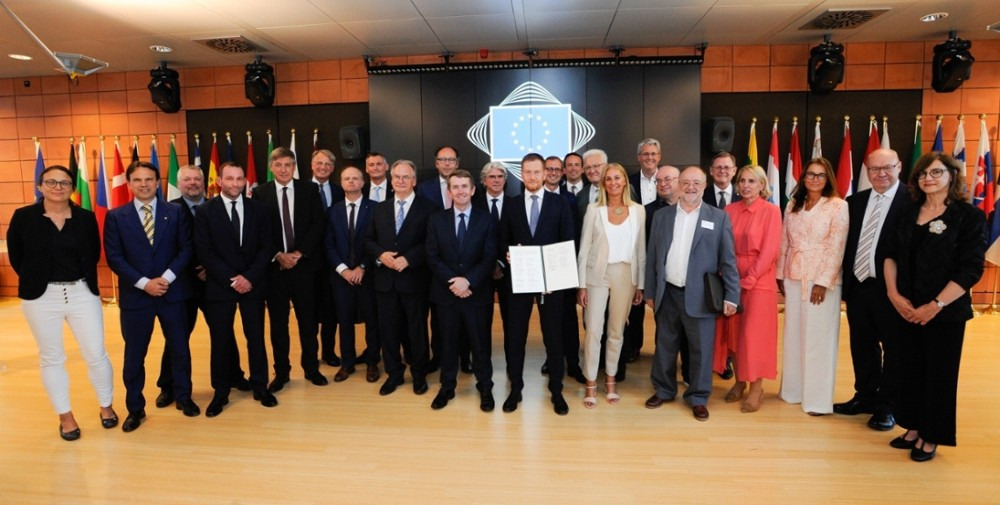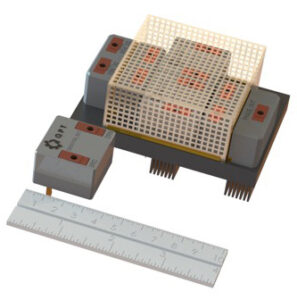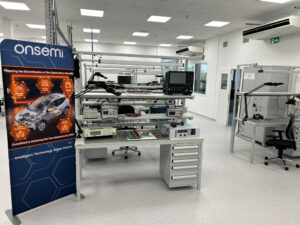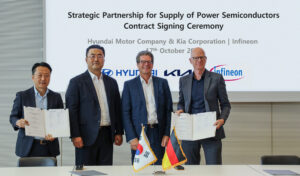News: Microelectronics
18 September 2023
On 7 September, the European Committee of the Regions (CoR) in Brussels, Belgium — in a signing ceremony hosted by the Minister-President of the Free State of Saxony (Freistaat Sachsen) Michael Kretschmer — launched the European Semiconductor Regions Alliance (ESRA) as a political network engaged to strengthen Europe’s capacity to produce semiconductors and microelectronics, reducing its dependency from supplies from third countries.
The Alliance aims to identify and help remove the obstacles to the industry’s strategic development by: improving the legal framework; promoting public and private investment; supporting the sharing of knowledge, best practices and innovation; fostering collaboration between regions; and developing strong and resilient integrated value chains in the semiconductor industry. A priority is to make the most of the EU Chips Act and to attract investment.
Against the backdrop of Europe’s insufficient semiconductor resilience, high supply chain sensitivity and high dependence on semiconductor imports, a package of measures to strengthen the EU’s semiconductor ecosystem was proposed by the European Commission on 8 February 2022 and approved by the European Parliament on 11 July 2023 and by the EU Council of Ministers on 25 July. The resultant EU Chips Act is intended to mobilize public and private investment of up to €43bn.
ESRA was initiated on 6 March by Saxony, whose Minister for Regional Development Thomas Schmidt is also the European Committee of the Regions’ rapporteur on the EU Chips Act.
“For each segment of the global semiconductor value chain, it takes on average more than 20 countries involved in the direct supply chain to work closely together,” notes Kretschmer. The global semiconductor shortage has exposed the dependence of regions and cities on supply from a limited number of companies and its vulnerability to export restrictions from third countries and other disruptions in the current geopolitical context. Europe’s share of the global semiconductor market is currently 10% by value, far below its economic weight. The EU Chips Act aims to boost market share to 20% by 2030.
ESRA sees itself as a platform of the regions and partner of the European Commission in the implementation of the EU Chip Act. It wants to make an active contribution to strengthening Europe as a semiconductor location in global competition and to promote the competitiveness of the semiconductor industry in the regions of the European member states as well as in the entire EU.
“With ESRA, we are opening up new ways for regions to collaborate, research and innovate to ensure Europe’s economic and digital sovereignty,” says Kretschmer. Growing European semiconductor manufacturing is expected to secure industrial production in the EU as a whole and make it more competitive with the USA and China.
“After the adoption of the European Chips Act, it is now a matter of implementation, of establishing new production facilities, of strengthening research and of training skilled workers,” says rapporteur Schmidt.
The aim of the alliance is hence to jointly strengthen growth and increase the competitiveness of the European semiconductor industry through:
- joint research and innovation, developing new technologies and applications;
- skills and talent development, promoting education and training programs;
- cluster development and cooperation, promoting regional clusters and cross-regional partnerships.
![]()
The 27 regions (from 12 EU member states, plus Wales) involved are: Baden-Württemberg, Bavaria, Hamburg, Hesse, Lower Saxony, Saxony, Saxony-Anhalt, Saarland, Schleswig-Holstein, and Thuringia in Germany; Andalusia, the Basque Country, Valencia, and Catalonia in Spain; Flevoland and North Brabant in the Netherlands; Carinthia and Styria in Austria; the Centro Region in Portugal; Flanders in Belgium; Auvergne-Rhône-Alpes in France; Piedmont in Italy, Tampere and Helsinki in Finland; South Moravia in the Czech Republic; Wales in the UK; and the Republic of Ireland.
“The participation of many regions in the launch event underlines the interest in increased cooperation at EU level in the field of microelectronics,” notes Kretschmer. “The Alliance will make an important contribution to making Europe competitive in this key industry in the years to come.”
In the jointly signed 10-point paper establishing the ESRA, the regions state the following objectives to:
- ensure the best possible and innovative support and competitive framework conditions for the regions within the framework of the European Chip Act, as well as a long-term definition of funds in the EU’s Multiannual Financial Framework to increase European semiconductor production;
- achieve the greatest possible flexibility and speed in the examination and granting of state aid in the semiconductor industry;
- expand R&D and promote networking of research institutions in and between the various regions and develop unique technological features;
- develop and implement solution approaches for a more sustainable production of semiconductors in the context of the European Green Deal;
- ensure sufficient water and energy supply at the production sites as well as supply with all necessary, especially strategic and critical raw materials;
- strengthen cooperation in talent development as well as education and training of skilled workers, in the recruitment of non-European skilled workers as well as international university cooperation;
- cultivate and intensify cooperation of existing clusters;
- conduct events in cooperation with industry players;
- articulate and represent common interests of member regions vis-à-vis the EU Commission and EU institutions; and
- networking and coordination of the regions involved at the working level and networking with industry associations and other European networks.
Among the 27 signatories but outside the EU, Wales is home to CSconnected, the South Wales Compound Semiconductor Cluster. “The Welsh Government is ambitious for the semiconductor sector in the south-east of Wales and the objectives of the ESRA align with our Programme for Government and our Innovation Strategy, published earlier this year,” notes Vaughan Gething, the Welsh Government’s Minister for the Economy. “Joining the ESRA will provide new opportunities for Welsh companies to embed themselves in European supply chains, support innovation, collaboration and ultimately create a more resilient semiconductor sector,” he adds.
“Europe remains Wales’ closest and most important trading partner, and our new membership of the European Semiconductor Regional Alliance will support our International Strategy as we maintain a close and positive relationship with the European Union,” says Wales’ Representative on Europe Derek Vaughan, who signed the agreement on behalf of the Welsh Government.
- SEO Powered Content & PR Distribution. Get Amplified Today.
- PlatoData.Network Vertical Generative Ai. Empower Yourself. Access Here.
- PlatoAiStream. Web3 Intelligence. Knowledge Amplified. Access Here.
- PlatoESG. Carbon, CleanTech, Energy, Environment, Solar, Waste Management. Access Here.
- PlatoHealth. Biotech and Clinical Trials Intelligence. Access Here.
- Source: https://www.semiconductor-today.com/news_items/2023/sep/esra-180923.shtml
- :has
- :is
- $UP
- 11
- 12
- 20
- 2022
- 2023
- 2030
- 25
- 27
- 7
- 8
- a
- Act
- active
- Adds
- Adoption
- Agreement
- Aid
- aim
- aims
- align
- All
- Alliance
- also
- ambitious
- an
- and
- applications
- approaches
- approved
- ARE
- AS
- associations
- At
- attract
- Austria
- average
- backdrop
- behalf
- Belgium
- below
- BEST
- between
- boost
- Brussels
- but
- by
- Capacity
- ceremony
- chain
- chains
- China
- chip
- Chips
- CHIPS Act
- Cities
- Close
- closely
- Cluster
- collaborate
- collaboration
- come
- commission
- committee
- Common
- Companies
- competition
- competitive
- competitiveness
- Compound
- conditions
- context
- contribution
- cooperation
- coordination
- Council
- countries
- country
- create
- critical
- Current
- Currently
- Czech
- czech republic
- deal
- definition
- dependence
- Dependency
- Derek
- develop
- developing
- Development
- digital
- direct
- disruptions
- each
- Earlier
- Economic
- economy
- ecosystem
- Education
- embed
- energy
- engaged
- ensure
- Entire
- especially
- establishing
- EU
- Europa
- Europe
- European
- european commission
- European Parliament
- european union
- Europes
- Event
- events
- examination
- existing
- expected
- export
- exposed
- facilities
- far
- Features
- February
- field
- financial
- Finland
- Flexibility
- following
- For
- fostering
- Framework
- France
- Free
- from
- funds
- geopolitical
- Germany
- Global
- Government
- granting
- greatest
- Green
- Growing
- Growth
- he
- help
- hence
- High
- Home
- hosted
- HTTPS
- identify
- implement
- implementation
- important
- imports
- improving
- in
- Increase
- increased
- industrial
- industry
- industry’s
- initiated
- innovate
- Innovation
- Innovation Strategy
- innovative
- institutions
- integrated
- intended
- interest
- interests
- International
- investment
- involved
- ireland
- IT
- Italy
- ITS
- itself
- jpg
- July
- Key
- knowledge
- launch
- launched
- Legal
- legal framework
- Level
- Limited
- location
- long-term
- lower
- maintain
- make
- Making
- manufacturing
- many
- March
- Market
- materials
- Matter
- measures
- member
- membership
- Michael
- ministers
- more
- most
- necessary
- Netherlands
- network
- networking
- networks
- New
- New technologies
- North
- Notes
- now
- number
- objectives
- obstacles
- of
- on
- opening
- opportunities
- Other
- our
- outside
- package
- Paper
- parliament
- participation
- partner
- partnerships
- platform
- plato
- Plato Data Intelligence
- PlatoData
- players
- plus
- political
- Portugal
- positive
- possible
- practices
- priority
- private
- produce
- Production
- programme
- Programs
- promote
- promoting
- proposed
- provide
- public
- published
- R&D
- Raw
- recruitment
- reducing
- region
- regional
- regions
- relationship
- remains
- remove
- represent
- representative
- Republic
- research
- Research Institutions
- resilience
- resilient
- restrictions
- resultant
- says
- sector
- secure
- sees
- segment
- semiconductor
- Semiconductors
- Sensitivity
- September
- Share
- sharing
- shortage
- Signatories
- signed
- signing
- Sites
- skilled
- solution
- South
- sovereignty
- Spain
- speed
- State
- States
- Strategic
- Strategy
- Strengthen
- strengthening
- strong
- sufficient
- supply
- supply chain
- Supply chains
- support
- Supporting
- sustainable
- takes
- Talent
- technological
- Technologies
- than
- The
- the Netherlands
- the UK
- themselves
- Third
- third countries
- this
- this year
- Through
- to
- together
- Trading
- Training
- Uk
- Ultimately
- union
- unique
- university
- USA
- value
- various
- vulnerability
- wants
- was
- Water
- ways
- we
- weight
- WELL
- WHO
- whole
- whose
- will
- with
- within
- Work
- workers
- working
- year
- years
- zephyrnet













